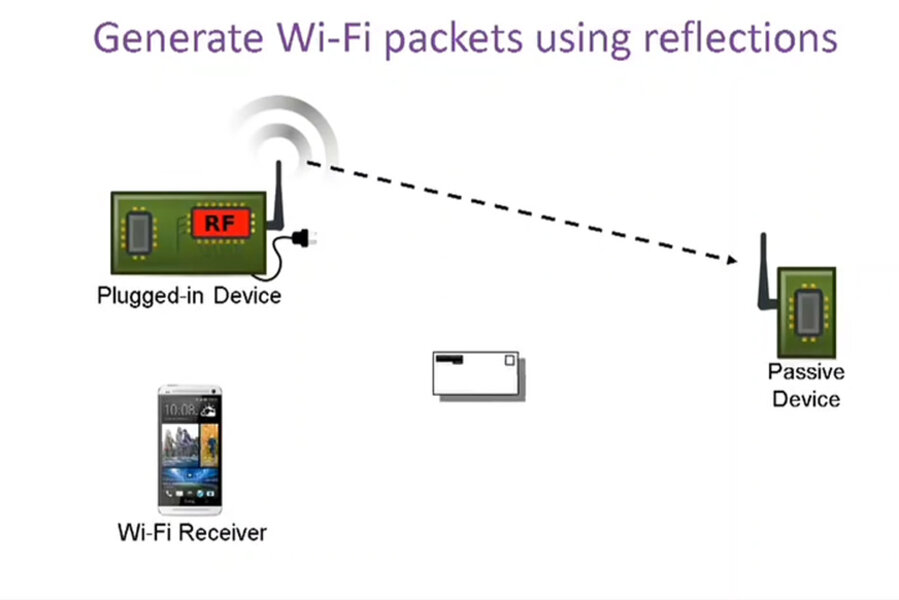New low-power Wi-Fi could save batteries throughout your house
Loading...
The Internet of Things has allowed an unprecedented number of devices — thermostats, light switches, door locks — to connect to each other, controlled by a central device, such as a computer or a smartphone.
But traditionally, the Wi-Fi signals that allow the devices to communicate rely on radio signals transmitted via a transmitter in each device, making the devices highly power-intensive.
Now, researchers at the University of Washington have developed a new technology they call “Passive Wi-Fi” that reflects a nearby existing Wi-Fi signal rather than using a radio transmitter, allowing the devices to consume 10,000 times less power.
“All the networking, heavy-lifting and power-consuming pieces are done by the one plugged-in device. The passive devices are only reflecting to generate the Wi-Fi packets, which is a really energy-efficient way to communicate,” Vamsi Talla, a University of Washington doctoral student in electrical engineering who co-authored the research, told Ars Technica.
The team of computer scientists and electrical engineers will present a paper on the technology at the upcoming USENIX Symposium on Networked Systems Design and Implementation in March.
The technology is based on the principle of backscattering, where signal waves are diffusely reflected from one source back in the direction they have come.
The Passive Wi-Fi standard builds on the researchers’ previous work on ambient backscatter technology, which allows two devices without batteries to communicate by backscattering an existing signal, such as a TV or cellular network.
Previously, researchers at Stanford University used ordinary Wi-Fi standards to develop similar technology that used backscattering to create a separate narrow-band channel for Internet of Things devices, which they unveiled last year at a conference in London.
Their technology, known as BackFi, is capable of transmitting data from one device to another at a rate of 5 megabits per second at a range of 3 feet and 1 megabit per second at 15 feet.
The new Passive Wi-Fi standard, which uses a separate base station to generate the radio signal for the backscatter devices, expands that range. It’s capable of handling data at speeds of up to 11 megabits per second and can work at distances of more than 100 feet, the researchers say.
For the Internet of Things, that also means that a broader range of devices – in a video describing the technology, the researchers point to an ordinary coffeemaker or a paper towel rack – could be designed to connect directly to the cloud rather than depending on wireless signals from a phone or a computer.
That could be a boon to companies hoping to improve on the design of devices that now use Bluetooth or another low-powered wireless technology, adding the additional benefit of security features available through Wi-Fi, Ars Technica reports.







